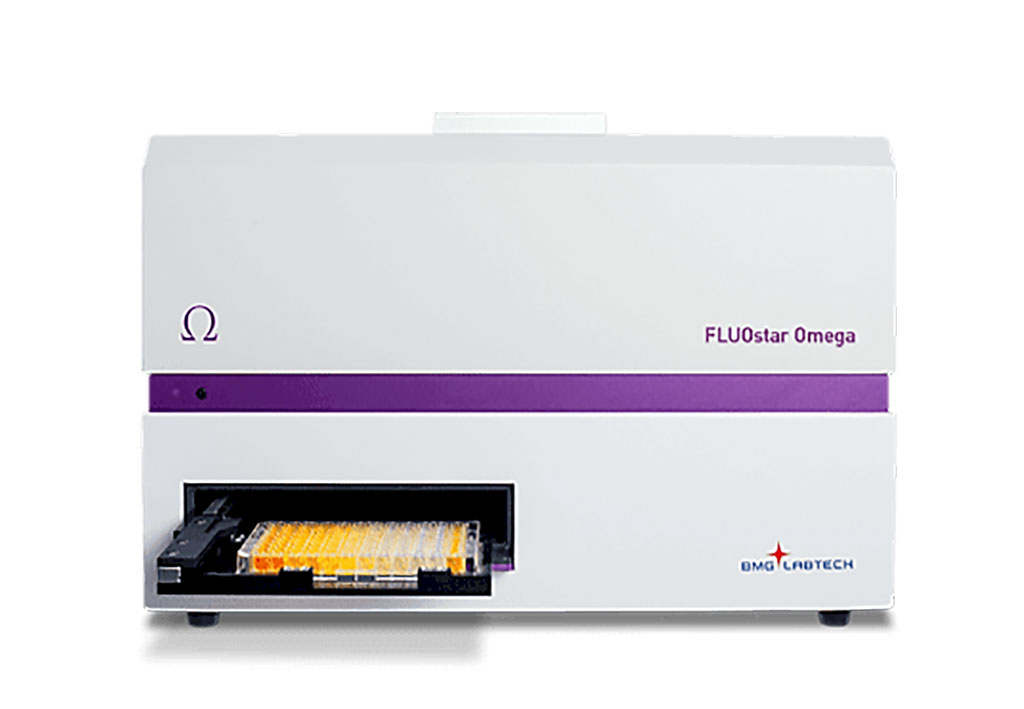Combination Urinary Biomarker Panel Detects Pancreatic Cancer Earlier
By LabMedica International staff writers
Posted on 11 Jan 2021
Pancreatic ductal adenocarcinoma (PDAC) is one of the deadliest cancers, with only around 9% of patients surviving more than 5 years. Asymptomatic in its initial stages, PDAC is mostly diagnosed late, when already a locally advanced or metastatic disease, as there are no useful biomarkers for detection in its early stages, when surgery can be curative.Posted on 11 Jan 2021
While blood has traditionally been the main source of biomarkers, urine represents a promising alternative biological fluid. It allows a completely non-invasive sampling, high volume collection, and ease of repeated measurements; it has a lesser dynamic range, with a less complex proteome than blood.

Image: The FLUOstar Omega Microplate Reader (Photo courtesy of BMG LABTECH).
Cancer specialist at the Queen Mary University of London (London, UK) and their colleagues obtained from multiple centers and a biomarker panel was assayed on 590 urine specimens: 183 control samples, 208 benign hepatobiliary disease samples (of which 119 were chronic pancreatitis), and 199 PDAC samples (102 stage I–II and 97 stage III–IV); 50.7% were from female individuals. PDAC samples were collected from patients before treatment. Blood and urine samples were analyzed with commercial enzyme-linked immunosorbent assay kits and the optical densities were determined using the FLUOstar Omega Microplate Reader (BMG LABTECH, Ortenberg, Germany).
The team changed their original protocol substituting Regenerating Family Member 1 Alpha (REG1A) with REG1B to enhance the performance of the panel to detect resectable PDAC. In a comparison of controls and PDAC stage I–II samples, the areas under the receiver operating characteristic curve (AUCs) increased from 0.900 and 0.926 in the training (50% of the dataset) and validation sets, respectively, to 0.936 in both the training and the validation (95% CI 0.888–0.984) datasets for the new panel including REG1B. This improved panel showed both sensitivity (SN) and specificity (SP) to be greater than 85%. Plasma CA19-9 enhanced the performance of this panel in discriminating PDAC I–II patients from controls, with AUC = 0.992, SN = 0.963, and SP = 0.967.
The authors concluded that they had successfully validated the performance of their urinary biomarker panel in detecting PDAC earlier. The PancRISK score is designed to enable further stratification of patients already predisposed to develop PDAC, thus enriching the population that should undergo follow-up, i.e., invasive clinical workup. The study was published on December 10, 2020 in the journal PLOS Medicine.














